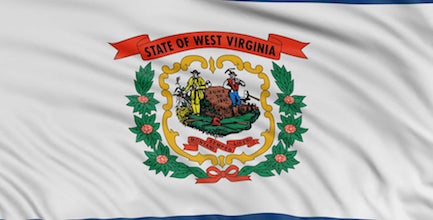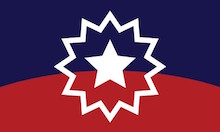Happy Birthday to what is now my home state, West Virginia. West Virginia was admitted to the Union on June 20, 1863, by proclamation — signed by President Abraham Lincoln.

Today is West Virginia Day and is a state holiday. On April 20th, 1863, President Lincoln issued a proclamation to formally admit West Virginia into the Union on June 20th, 1863, giving West Virginia the distinction of being the only state in the Union to have acquired its sovereignty by proclamation of the President of the United States. If my math is correct, this is West Virginia’s 160th birthday.
West Virginia almost wasn’t named West Virginia — the state was originally going to be named “Kanawha” to honor a Native American Tribe, but after its succession from the Commonwealth of Virginia, officials wanted Virginia to be part of its name.
Here’s some more interesting things you may not know about “almost Heaven — West Virginia:”
• West Virginia is the only state completely within the Appalachian Mountain range.
• Outdoor advertising got its start in Wheeling when the Bloch Brothers Tobacco Company painted bridges and barns with “Treat Yourself to the Best, Chew Mail Pouch.”
• The first rural free delivery mail service took place in 1896 in Charles Town (through the Post Office Department’s pilot program to determine the feasibility for rural delivery for the rest of the country.)
• Cecil Underwood made history in 1956 when he became the state’s youngest governor at 34 — he made history again in 1996 when he became the state’s oldest governor — he was elected when he was 74.
• West Virginia is the third most forested state.
• The State Capitol dome is higher than the dome on the nation’s capitol — it’s 292 feet tall.
• The USS West Virginia was hit during the attack on Pearl Harbor — the mast from the ship is located on the West Virginia University campus — in front of Oglebay Hall.
• The first brick street in the world was laid in Charleston (on Summers Street.)
•West Virginia holds the record for having the most towns named after cities in other countries…. among others, they include Athens, Berlin, Cairo, Calcutta, Geneva and Shanghai.
Depending on your point of view, West Virginia can be considered as either the most northerly of the southern states or the most southerly of the northern states.
But whatever — our home state is rich in history and beauty and the people here do drive cars. We have indoor plumbing. We even use knives and forks. The sun doesn’t always shine here, but the people do.
Happy Birthday — West Virginia.
— 30 —

